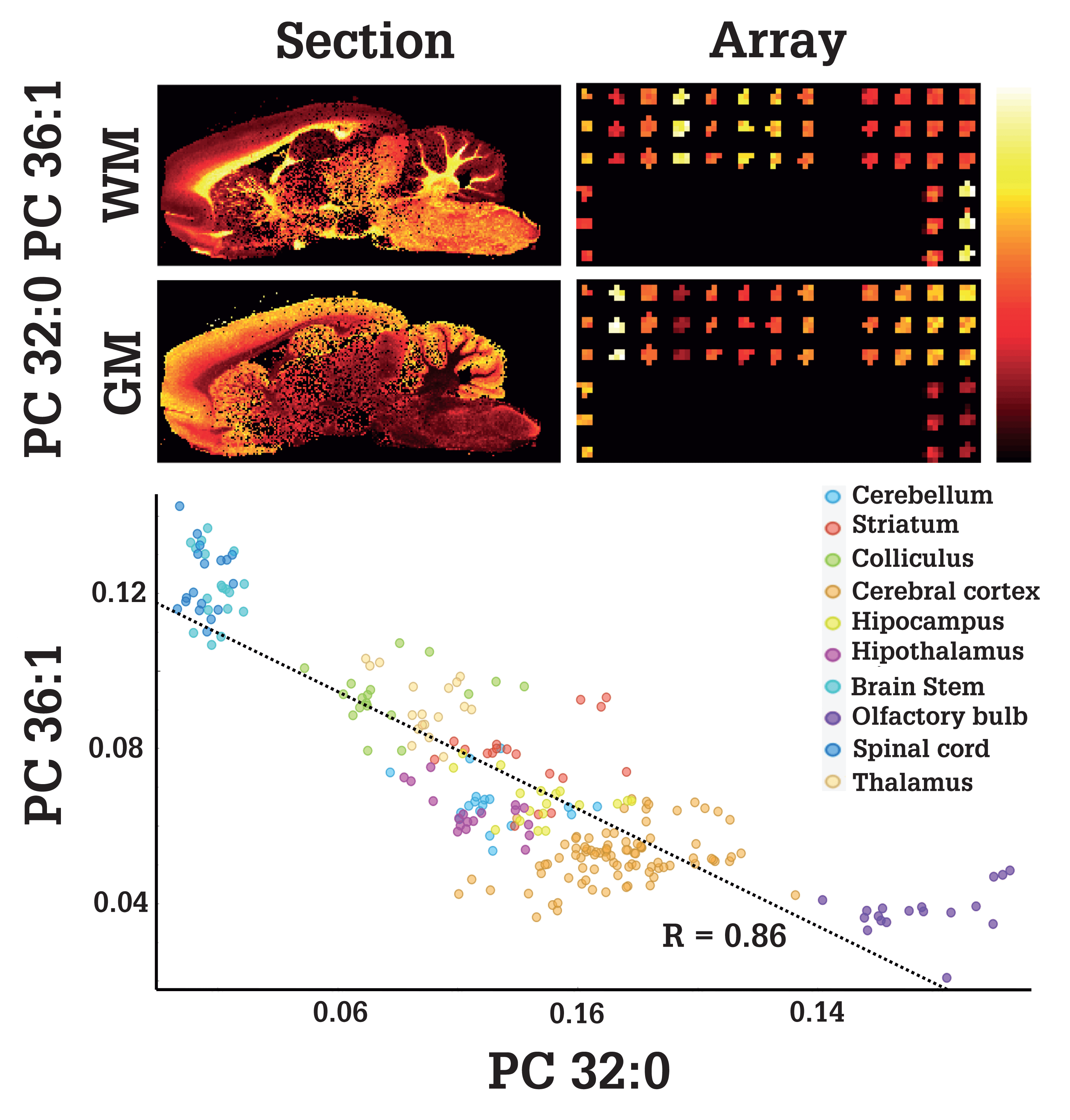A cross-border collaborative group has developed a microarray/MS-based method that promises simplified lipid profiling in tissues and cells (1). We sat down with two of the team – Gabriel Barreda-Gómez and José Andrés Fernández González – to find out more.
Our objective was to develop a novel method capable of determining the lipid phenotype of cells, tissues and organs. We’re particularly interested in the brain, so we went in search of an approach that would allow us to identify specific cell subtypes in brain tissue, as well as determine their proportions and characterize the effect of cancer on the composition of their membranes.
We make use of two complementary technologies: microarrays and matrix-assisted laser desorption/ionization (MALDI)-MS. The microarrays can hold membrane homogenates, lipid extracts or intact cells, spotted on the surface of a microscope slide using a piezoelectric robot to minimize the volume of sample required. We’re then able to utilize MALDI-MS to generate our data because we use a sublimator to ensure each spot on the array is covered with a similar amount of matrix. Our approach also allows us to combine lipid profiling with other experiments, such as protein affinity or autoradiography, as the membrane proteins in our samples remain fully functional.

The technology is well-suited to the design of diagnostic tests based on lipid biomarkers. One possible application is tumor screening; the growth of malignant cells requires a great synthesis of new membranes so we would expect to see significant changes in the lipid fingerprint of a tissue, even in the early stages of cancer. We envisage our approach complementing the current gold standard (traditional histology) and hope it might go some way to reducing the growing pressure placed on hospital pathology departments.
References
- R Fernandes et al., “Microarray and mass spectrometry-based methodology for lipid profiling of tissues and cell cultures”, Anal Chem, 24, 15967 (2019). DOI: 10.1021/acs.analchem.9b04529
